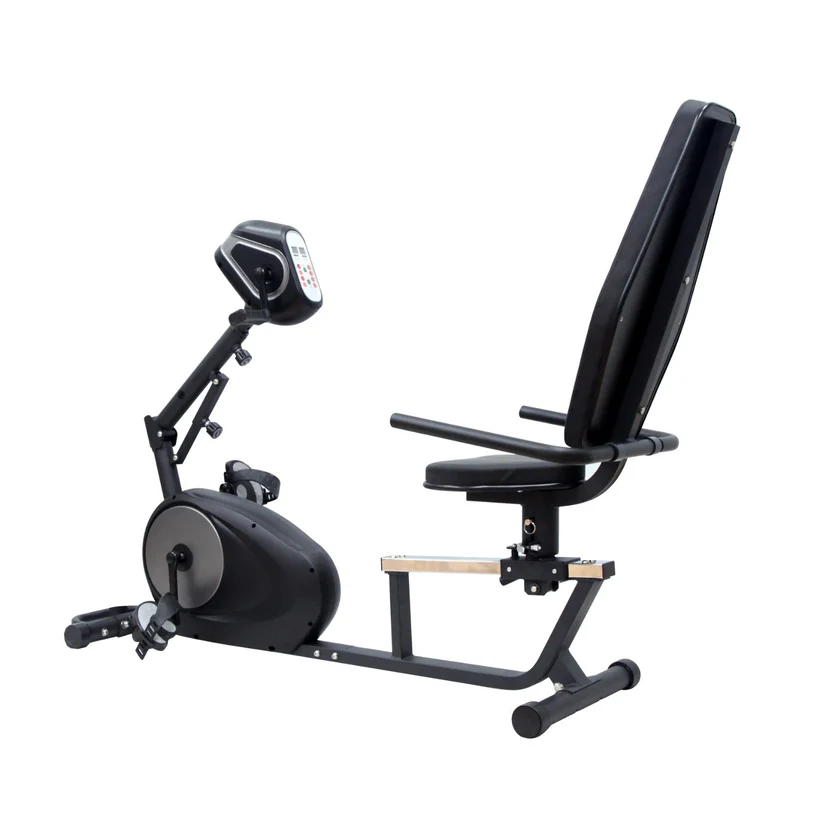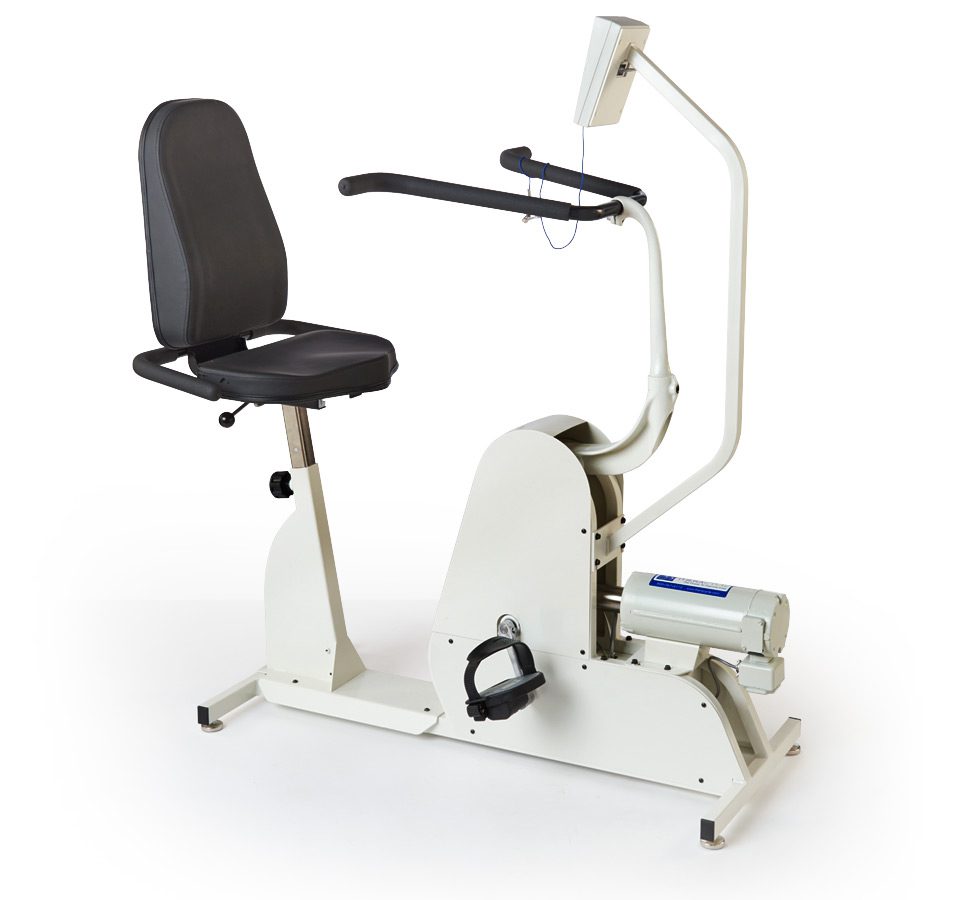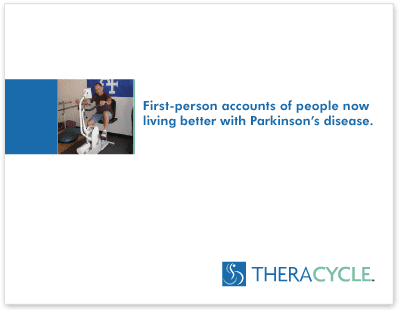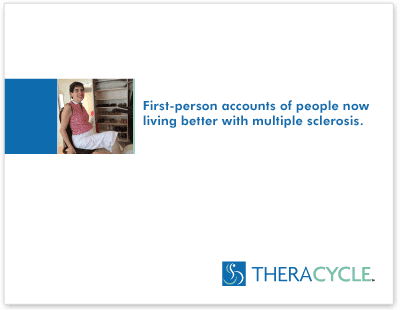- ›
- Conditions
- ›
- Theracycle & Spinal Cord Injury
Spinal Cord Injury Exercise Equipment for SCI Rehabilitation
Theracycle Exercise Equipment for Spinal Cord Injury
How Can Theracycle Help Your Spinal Cord Injury Rehabilitation?
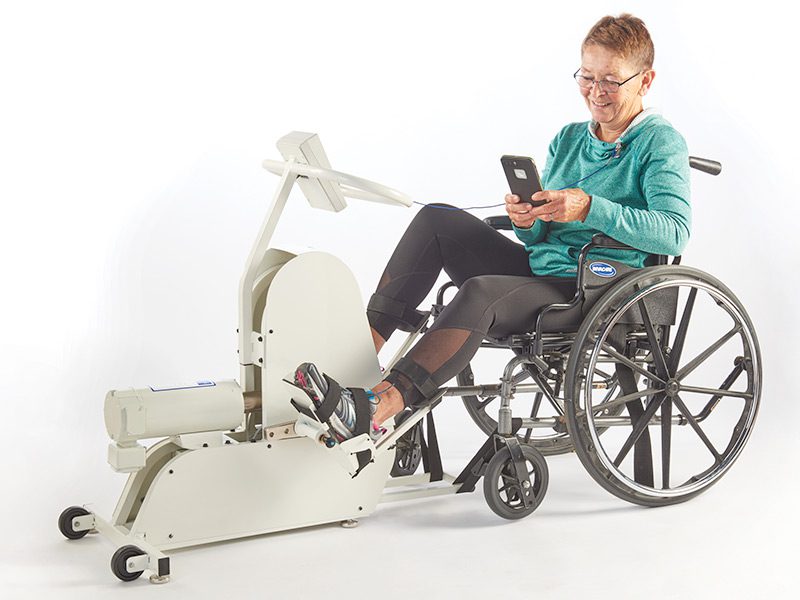 The Theracycle is in-home spinal cord injury exercise equipment that assists you with your spinal cord injury to get the exercise and physical therapy you need. Using the Theracycle on a regular basis for spinal cord injury exercise will help to reduce tone and spasticity, increase flexibility, and improve your overall health and mobility. A Theracycle is designed specifically for those with neurological and mobility challenges to ensure ease of use, efficacy and user comfort, and includes customized pedals to ensure that you will be safe and secure as you get a full-body workout for your spinal cord injury.
The Theracycle is in-home spinal cord injury exercise equipment that assists you with your spinal cord injury to get the exercise and physical therapy you need. Using the Theracycle on a regular basis for spinal cord injury exercise will help to reduce tone and spasticity, increase flexibility, and improve your overall health and mobility. A Theracycle is designed specifically for those with neurological and mobility challenges to ensure ease of use, efficacy and user comfort, and includes customized pedals to ensure that you will be safe and secure as you get a full-body workout for your spinal cord injury.
Exercise with Theracycle SCI exercise equipment has significant benefits:
- Reduced spasticity
- Reduced tonality
Doctors, physical therapists, and researchers continue to discover the benefits of Theracycle exercise equipment for spinal cord injuries.
Learn More About Using Theracycle for Spinal Cord Injury Treatment »
Customer Testimonial
I was paralyzed from the chest down in 1987. My doctor agreed I needed something to help my legs and circulation. I ride my Theracycle 3 times a day for 15 minutes. It’s pretty easy to get on and off, and made of heavy steel so it’s stable and very durable. As far as my mood and muscle tone, it’s helped me quite a bit.” Tony Richards
Bassett, Virginia
Commit to improving your quality of life today!
Call us: 1.800.367.6712
Read more testimonials from Theracycle users with Spinal Cord Injuries »
Spinal Cord Injury Recovery
Spinal Cord Injury Exercises
Post-spinal cord injury range of motion exercises are key to preventing spasticity. Spasticity refers to tightness and stiffness in muscles and joints, and that can make movement even more difficult. More alarming is that, left untreated, spasticity can lead to painful and more frequent spasms.
There are two kinds of range of motion exercises that are relevant to patients recovering from a spinal cord injury: passive range of motion (PROM) and self range of motion (SROM). As you might expect, SROM exercises are things you can do by yourself, like various stretches and bends. They typically require that the patient have at least partial use of their arms and legs after injury.
On the other hand, PROM exercises might include activities with motorized exercise equipment, such as a Theracycle, or exercises of the type you might perform with the help of an occupational or physical therapists. In either instance, the point is that the external assistance enables the patient to go through the full range of motion.
Benefits of Exercise for Patients Recovering from Spinal Cord Injuries
And of course, this says nothing of the overall positive health benefits of exercise, which are doubly important to patients who have experienced a spinal cord injury. That point is underscored by physical therapists at Burke Rehabilitation Center, who have noted that, ‘more physically active individuals with SCI have a lower risk of developing secondary complications such as…pressure sores and respiratory illness. Physical activity can also help you better manage problems such as spasticity, weight gain and chronic pain.’
Medical Effectiveness of the Theracycle Recumbent Exercise Bike for Spinal Cord Injury
An SCI (spinal cord injury) refers to damage done to any part of the spinal cord. Depending on the nature of the injury, an SCI can lead to loss of function and sensation in the patient’s extremities—which means they can have a catastrophic effect on the patient’s life and independence.
In a study originally published in Spinal Cord, the official journal of the International Spinal Cord Society, researchers documented significantly lower mean F-wave amplitude, mean F-wave/M-response ratio, and maximum F-wave/M-response ratios after therapy than before. This led the researchers to conclude that the antispastic effect of motorized exercise bicycle therapy was able to be documented by a decrease of F-wave-amplitude parameters.i A subsequent study published in Frontiers in Neurology echoed those findings among a study group of 64 wounded war veterans, all except one suffering from complete SCI, and also found significant improvement in hip, ankle, and knee range of motion after motorized cycling therapy.ii
A scientific review of existing research into activity-dependent plasticity in spinal cord injury was published in the Journal of Rehabilitation Research & Development, a peer-reviewed publication of the Department of Veterans Affairs since 1964. These researchers cited multiple studies that support the hypothesis that passive exercise can induce functional ranges of joint motion and sensory feedback necessary to maintain or improve neuromuscular function after complete or incomplete SCIs.iii
Further, the researchers found that motorized cycling, in particular, is advantageous for the fact that performing the exercise does not require any volitional control. Motorized cycling also is more effective because it can be initiated soon after the original injury, although certain studies have found that retention of the benefits bestowed likely is reliant on continued cycling.iv
Similarly, researchers found that among lab rats with thoracic SCI, treadmill training led to a significant increase in the formation of lumbar spinal synapses.v This built on earlier research, which observed significant positive indicators—the expression of synaptophysin and PSD-95, in particular—in rats engaged in treadmill training as compared to the untrained group.vi In the end, multiple researchers found that active training can increase or improve nerve regeneration and function recovery.vii, viii Researchers attribute this to the fact that exercise can induce the creation and release of specific and necessary biochemicals by our injured bodies, like brain-derived neurotrophic factors (BDNF) and vascular endothelial growth factors (VEGF), that promote spinal oligodendrocyte regeneration.ix Perhaps not surprisingly, mixed treatment plans that include (active or passive) exercise as a core component yield the best results in terms of promoting motor function recovery.x This is because exercise appears to promote nerve regeneration with functional restoration, and to promote muscle fiber regeneration.
Commit to improving your quality of life today!
Call us: 1.800.367.6712
i Rösche, J., Paulus, C., Maisch, U. et al. The effects of therapy on spasticity utilizing a motorized exercise-cycle. Spinal Cord 35, 176–178 (1997).
ii Rayegani, S.M., H. Shojaee,L. Sedighipour, M.R. Soroush, M. Baghbani, O.B. Amirani. The effect of electrical passive cycling on spasticity in war veterans with spinal cord injury. Frontiers in Neurology, 2, 39 pp (2011).
iii Lynskey, J.V., PhD, PT; A. Belanger, MS; R. Jung, PhD; Activity-dependent Plasticity in Spinal Cord Injury, Journal of Rehabilitation Research & Development, vol. 45, no. 2, pp 229-240 (2008).
iv Prochazka A, Gillard D, Bennett DJ. Positive force feedback control of muscles. Journal of Neurophysiology, 77(6): 3226–36 (1997).
v H. Wang, N.-K. Liu, Y. P. Zhang et al., Treadmill training induced lumbar motoneuron dendritic plasticity and behavior recovery in adult rats after a thoracic contusive spinal cord injury. Experimental Neurology, vol. 271, pp. 368–378 (2015).
vi Y. Goldshmit, N. Lythgo, M. P. Galea, and A. M. Turnley, Treadmill training after spinal cord hemisection in mice promotes axonal sprouting and synapse formation and improves motor recovery. Journal of Neurotrauma, vol. 25, no. 5, pp. 449–465 (2008).
vii I. Kulbatski, A. J. Mothe, A. Keating, Y. Hakamata, E. Kobayashi, and C. H. Tator, Oligodendrocytes and radial glia derived from adult rat spinal cord progenitors: morphological and immunocytochemical characterization. Journal of Histochemistry and Cytochemistry, vol. 55, no. 3, pp. 209–222 (2007).
viii J. Fu, H. Wang, L. Deng, and J. Li. Exercise Training Promotes Functional Recovery after Spinal Cord Injury. Neural Plasticity, 7 pgs (2016).
ix F. Gómez-Pinilla, J. R. Huie, Z. Ying et al., BDNF and learning: Evidence that instrumental training promotes learning within the spinal cord by up-regulating BDNF expression. Neuroscience, vol. 148, no. 4, pp. 893–906 (2007).
x H. A. Petrosyan, V. Alessi, A. S. Hunanyan, S. A. Sisto, and V. L. Arvanian, Spinal electro-magnetic stimulation combined with transgene delivery of neurotrophin NT-3 and exercise: Novel combination therapy for spinal contusion injury. Journal of Neurophysiology, vol. 114, no. 5, pp. 2923–2940 (2015).




